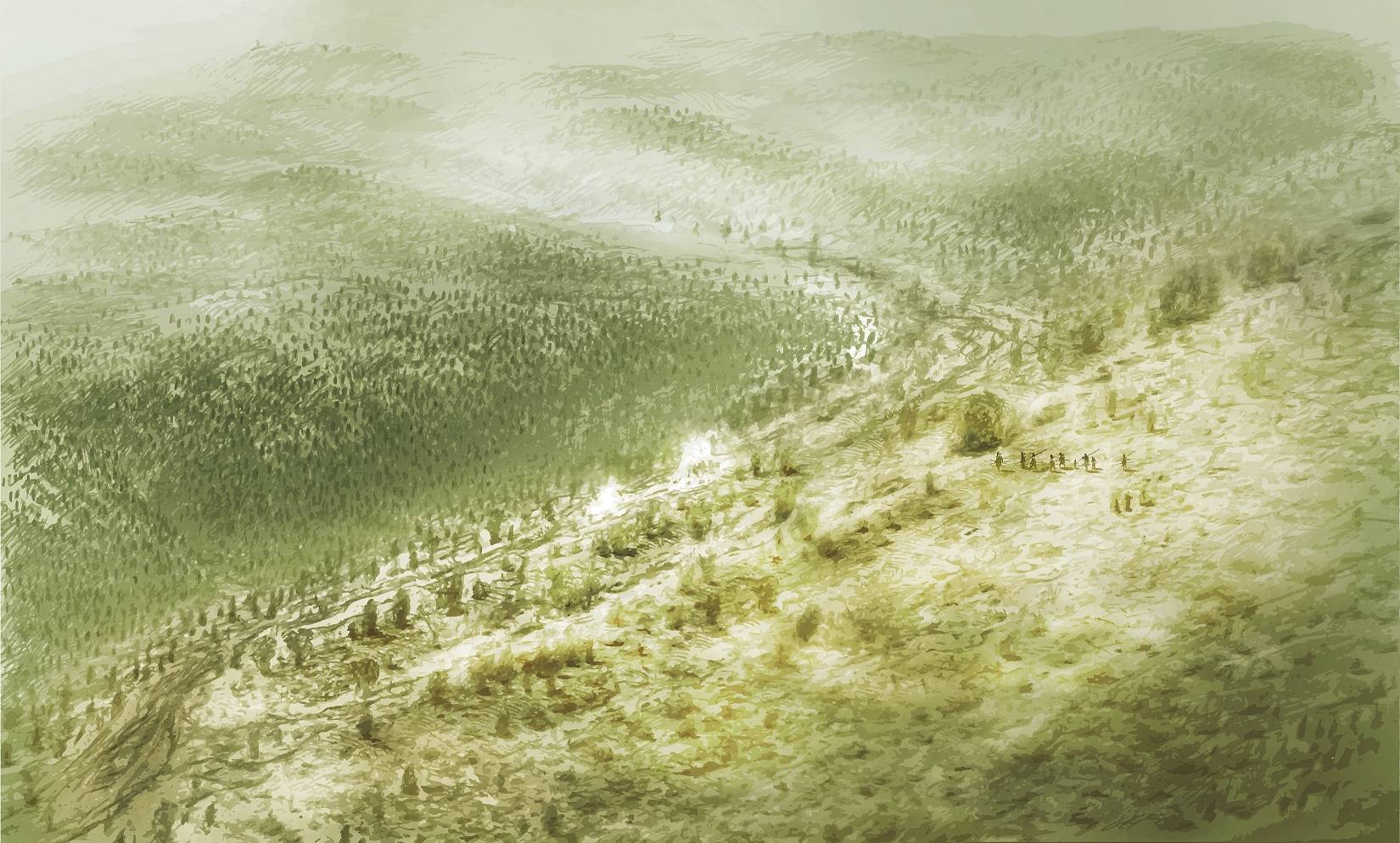The Paleoindian Period at Spring Lake

The Paleoindian time period marks the earliest human occupation of North America. In addition to hunting large mammals such as mammoth, mastodon, bison, camel and horse, Paleoindians also utilized a wide variety of plants and numerous smaller animals. Archaeological investigations at the Spring Lake site have revealed a seemingly continuous record of human occupation beginning more than 13,000 years ago during the Clovis times all the way through the prehistoric sequence to the Spanish Colonial era and into the Historic period. Such a long record at one locale is quite uncommon among known archaeological sites in Texas and even throughout the Americas.
The first evidence of Paleoindian occupation at Spring Lake came from the late Dr. Joel Shiner’s underwater investigations in the 1970s and 1980s. Shiner’s work recovered Early Paleoindian point types such as Clovis and Folsom. However, these specimens were recovered from secondary deposits, which means they were removed from their original context. No intact Early Paleoindian deposits have been identified yet in controlled excavations.
Part of the reason for this is the great depth of the sediments around Spring Lake. As terrestrial excavations approach the depths at which paleoindian materials could begin to appear, the water table intrudes upon the excavation and units begin to fill. A joint terrestrial and underwater investigation, still in the planning stages, has been proposed.
Early Paleoindian Phase in Central Texas
Early Paleoindian artifacts are associated with the Clovis and Folsom cultures and diagnostic items include fluted, lanceolate projectile points. The Clovis culture is also characterized by well-made prismatic blades (Collins 1995; Green 1964). The Early Paleoindian stage is generally characterized by nomadic cultures that relied heavily on hunting large game animals (Black 1989). However, recent research has suggested that early Paleoindian subsistence patterns were considerably more diverse than previously thought and included reliance on local fauna, including turtles (Black 1989; Bousman et al. 2004; Collins and Brown 2000; Hester 1983; Lemke and Timperley 2008). Folsom cultures are considered to be specialized bison hunters, as inferred from the geographic location and artifactual composition of sites (Collins 1995).
Early Paleoindian artifacts from the Spring Lake Site
Late Paleoindian Phase in Central Texas
The Late Paleoindian substage occurred from ca.10,200–8800 B.P. Reliable evidence for these dates was recovered from the Wilson-Leonard site, north of Austin (Bousman et al. 2004; Collins 1998). At Wilson-Leonard, archaeologists excavated an occupation known as Wilson, named for the unique corner-notched projectile point. The dense occupation also included a human burial (Bousman et al. 2004; Collins 1998). In addition to the Wilson occupation, Golondrina-Barber and St. Mary’s Hall components, dating between 9500 and 8800 B.P., were excavated. Collins (1995) suggested the Wilson, Golondrina-Barber, and St. Mary’s Hall components represent a transitional period between the Paleoindian and Archaic Periods due to the presence of notched projectile points and burned-rock cooking features.
